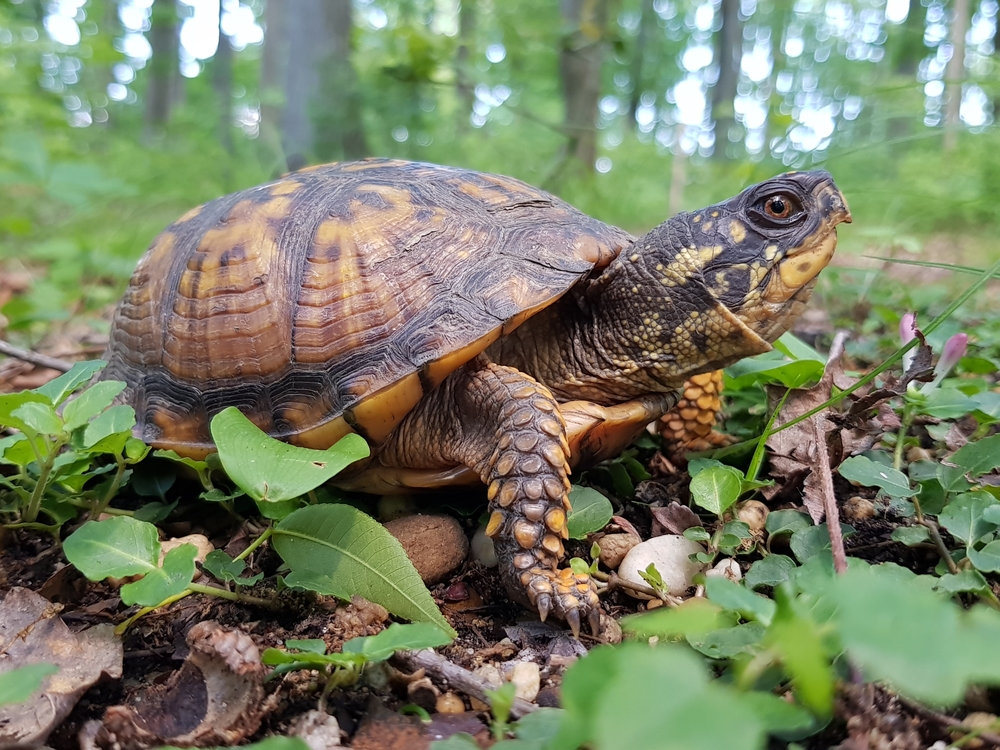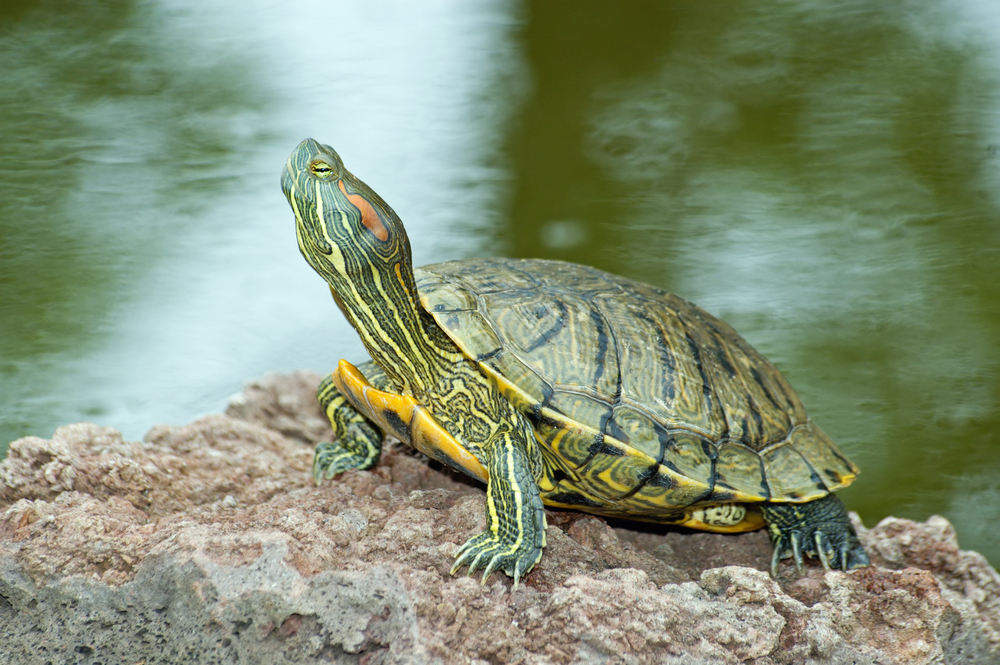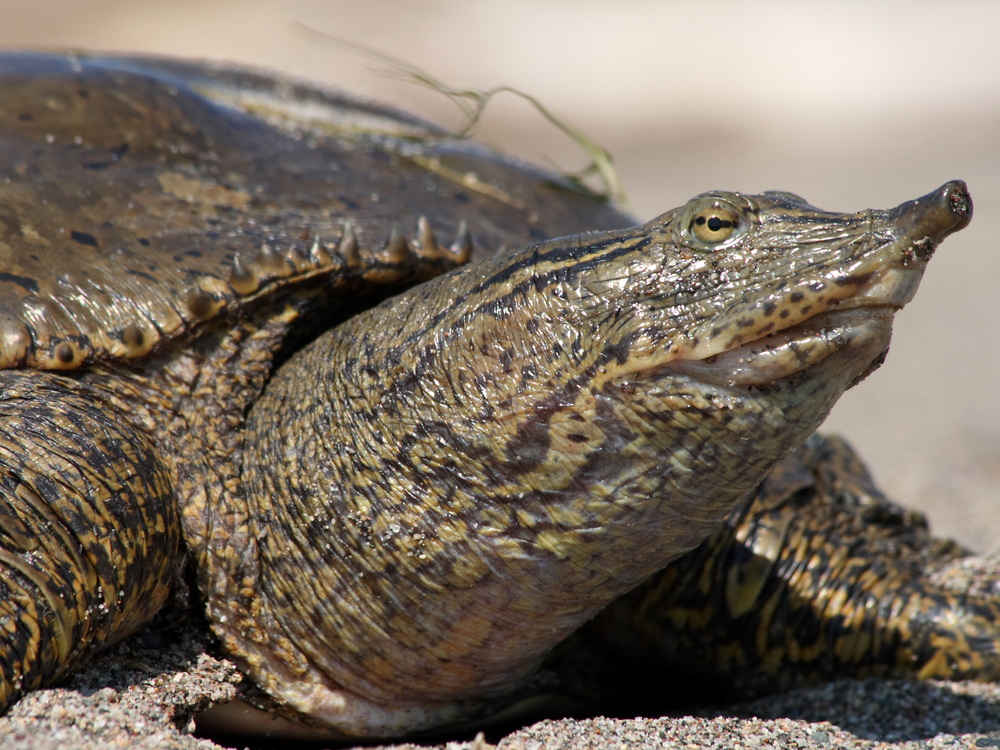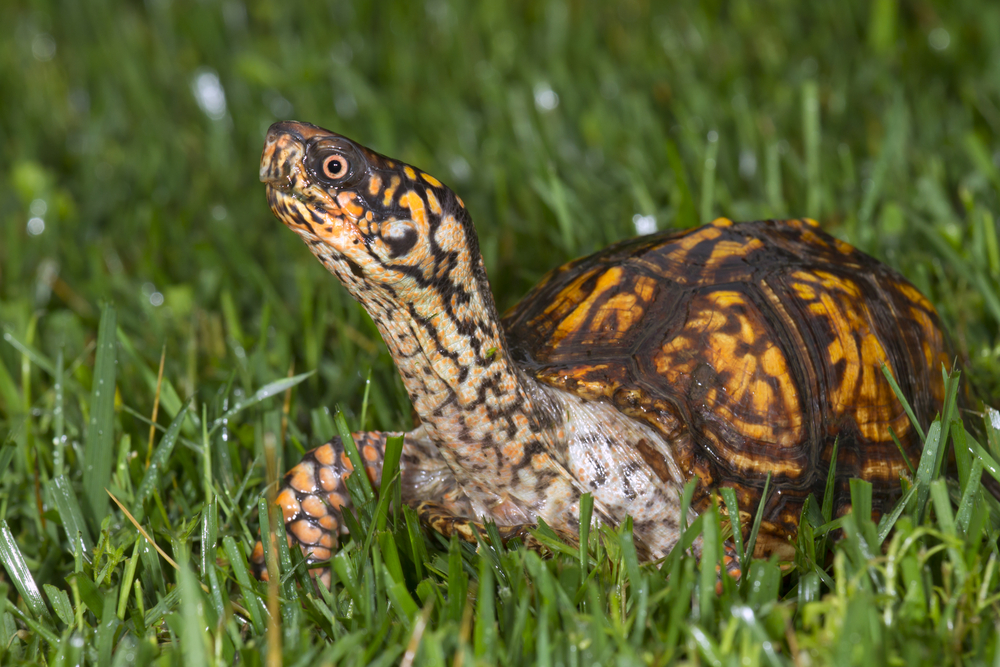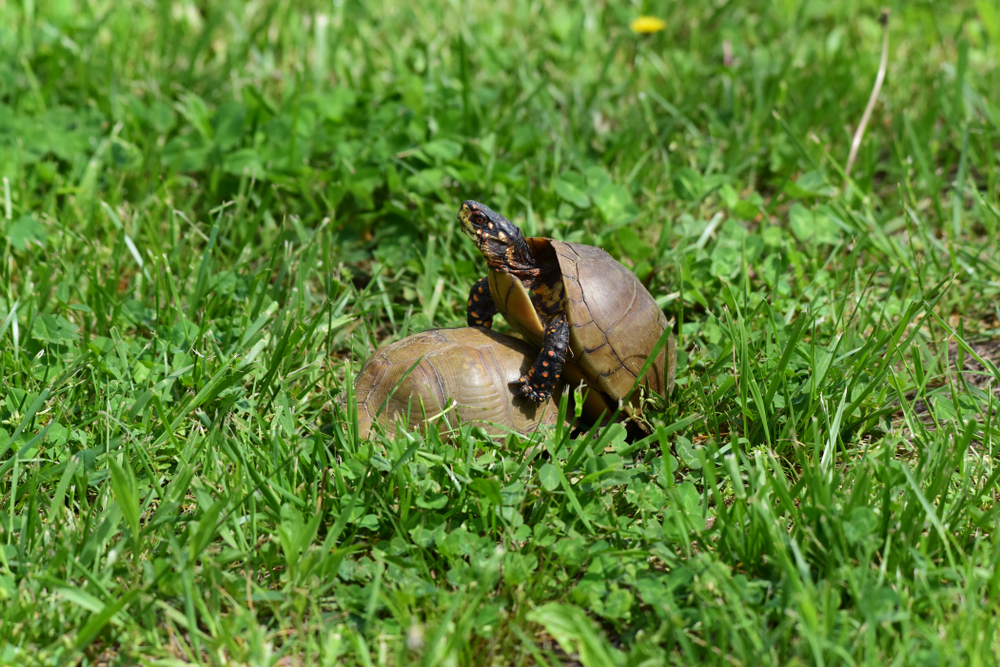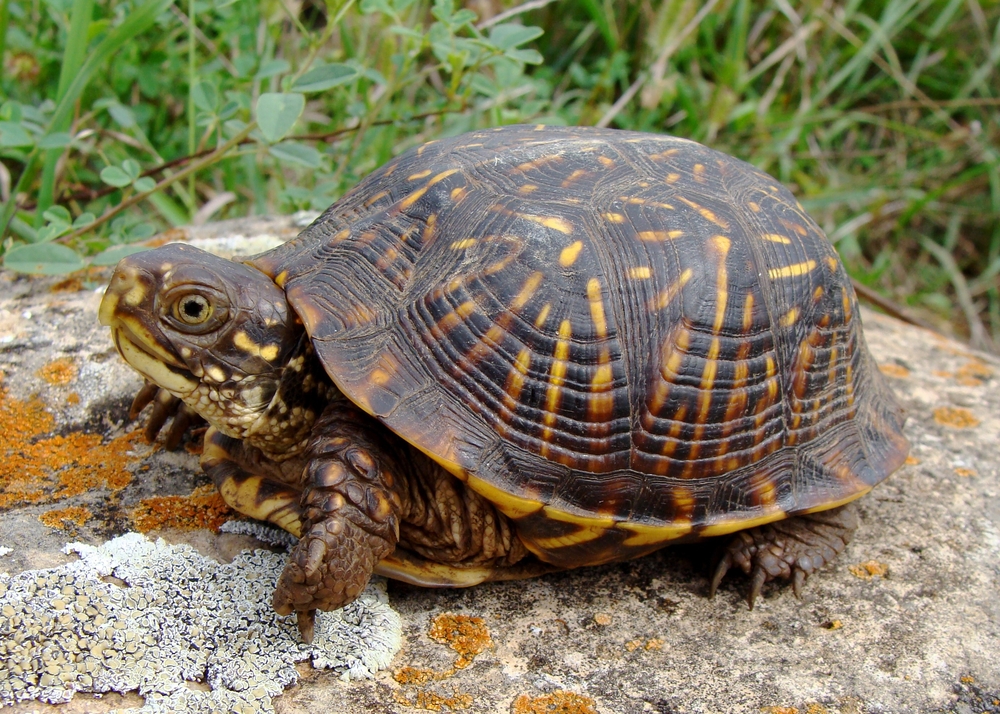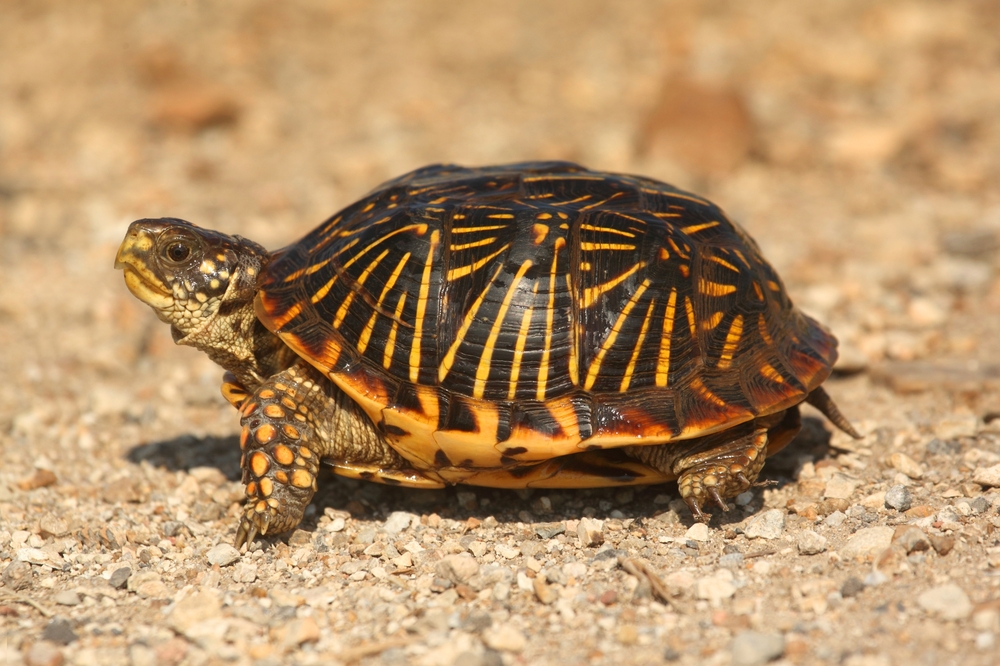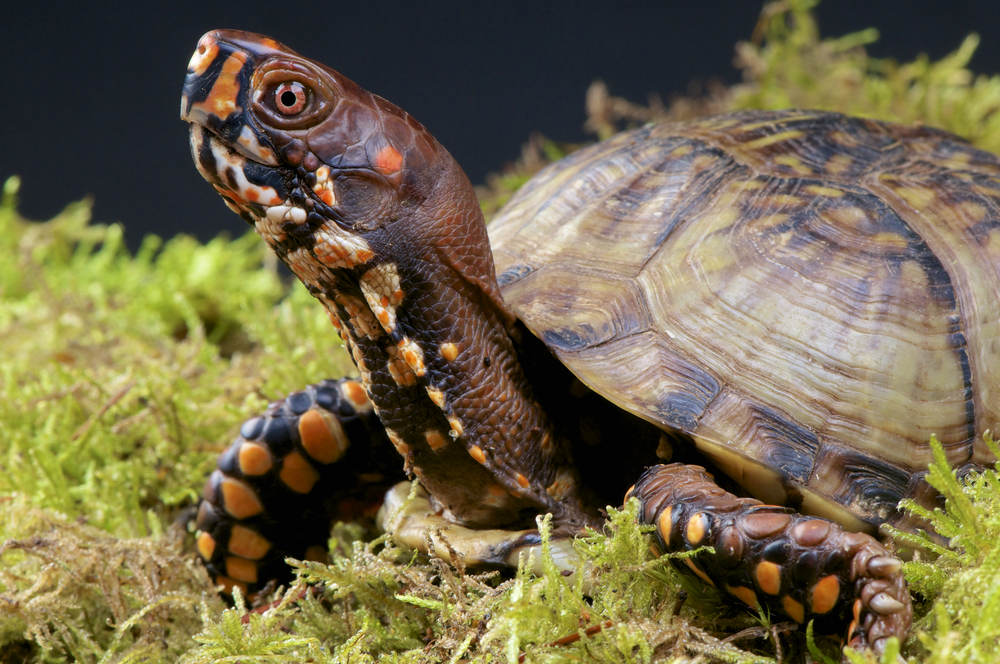There are several species of box turtles within the genus Terrapene, and they are primarily found in North America. The exact number of recognized species can vary based on taxonomic revisions and research, at this time there are six recognized species of box turtles:
- Eastern Box Turtle (Terrapene carolina): This species is found in the eastern United States and is known for its colorful shell markings and distinct hinged shell. It includes several subspecies.
- Florida Box Turtle (Terrapene bauri): Endemic to Florida, this species has a more flattened shell compared to some other box turtle species.
- Three-Toed Box Turtle (Terrapene triunguis): Found in the southern United States and parts of Mexico, this species is known for having three toes on each hind foot, as opposed to the usual four in other box turtle species.
- Gulf Coast Box Turtle (Terrapene carolina major): This subspecies of the Eastern Box Turtle is found along the Gulf Coast of the United States.
- Ornate Box Turtle (Terrapene ornata): Found in the central United States, this species is characterized by intricate shell patterns and is divided into two subspecies: the Western Ornate Box Turtle and the Desert Box Turtle.
- Mexican Box Turtle (Terrapene coahuila): This species is native to northeastern Mexico and is characterized by a domed shell with a hinge.
It’s important to note that box turtles are often subdivided into various subspecies, and the taxonomy of this group of turtles continues to be a subject of research and debate. As a result, the classification of box turtles may be subject to revisions as scientists gain a better understanding of their genetic diversity and geographic variations. Conservation efforts are important to protect these unique turtle species and their diverse habitats.



































































